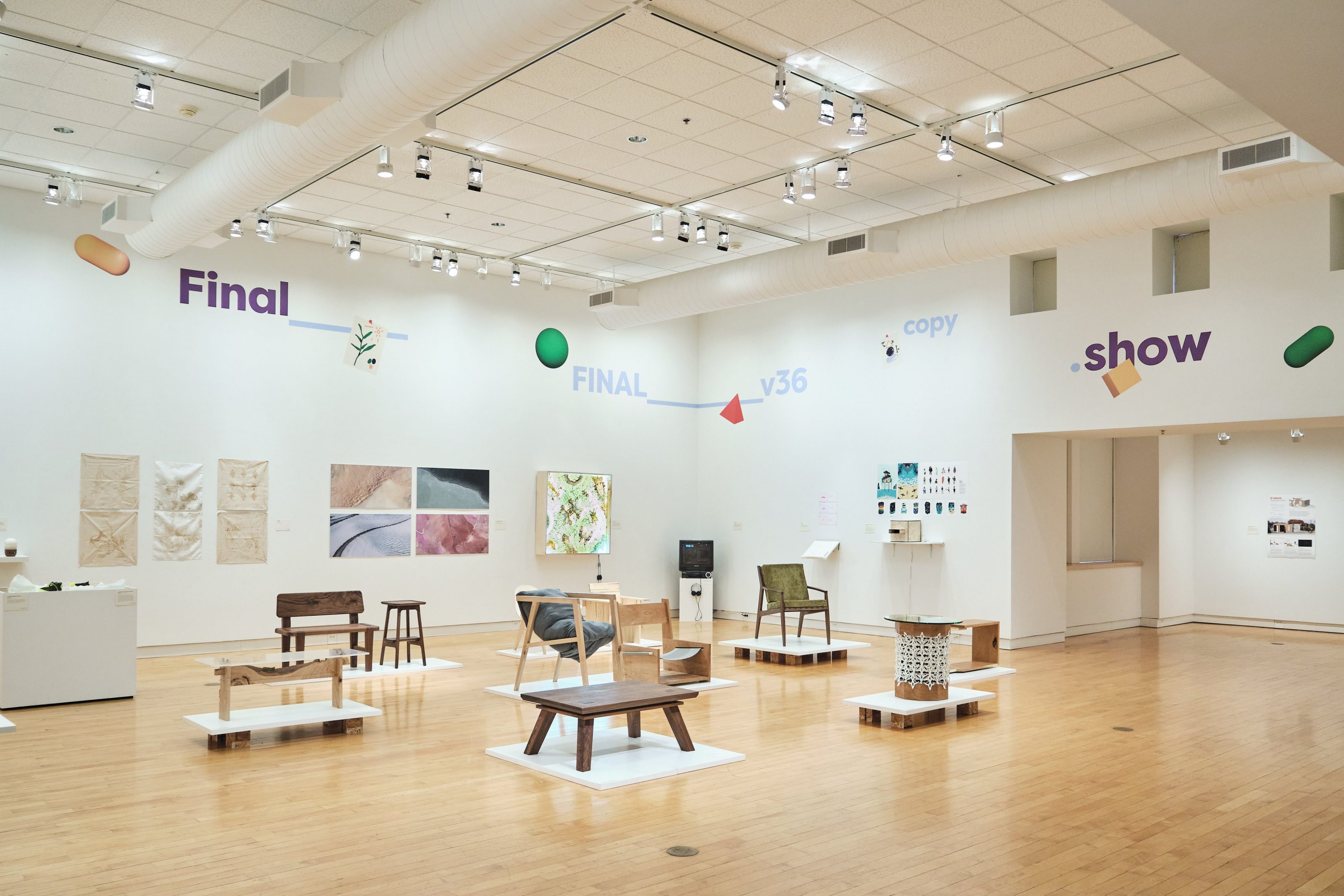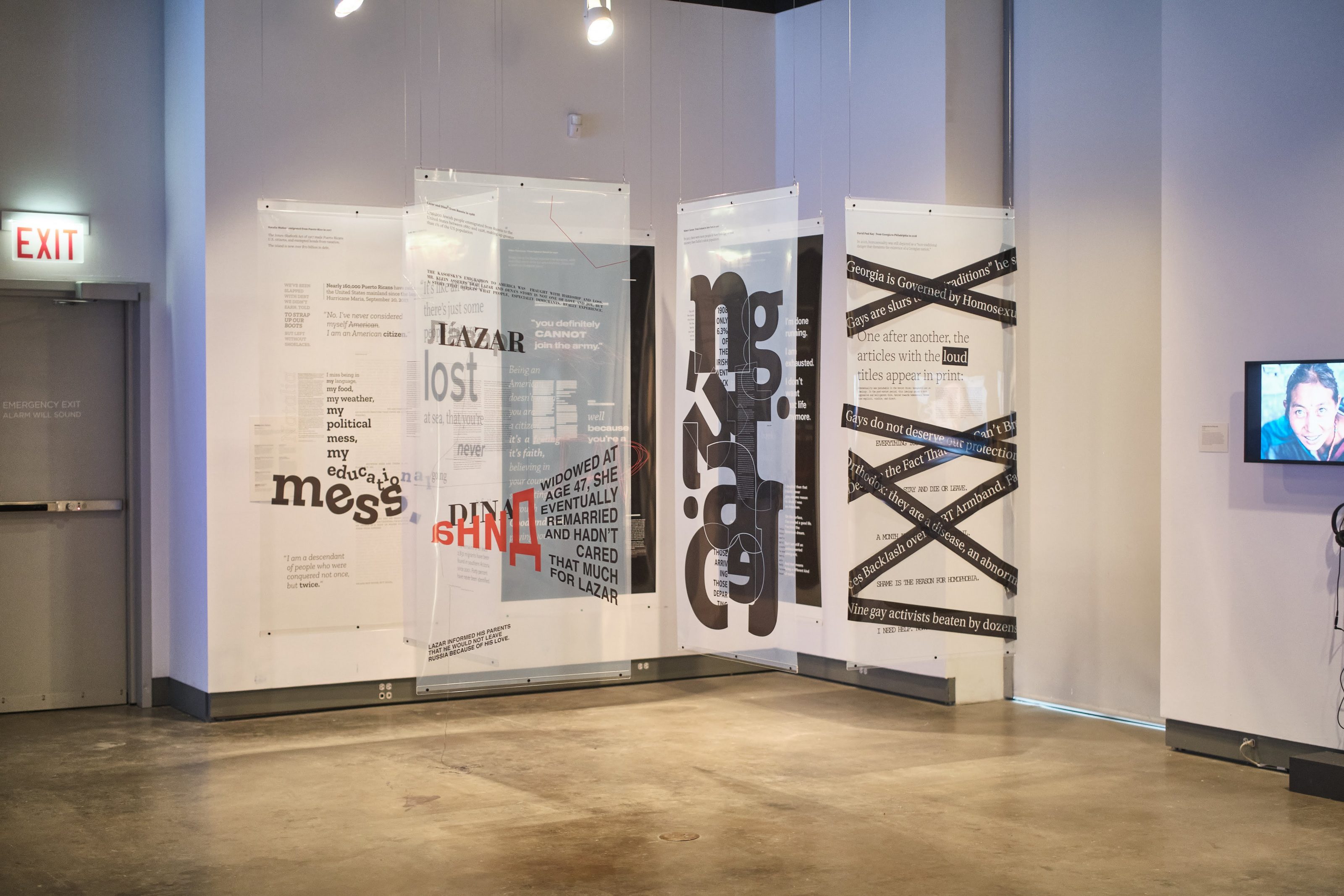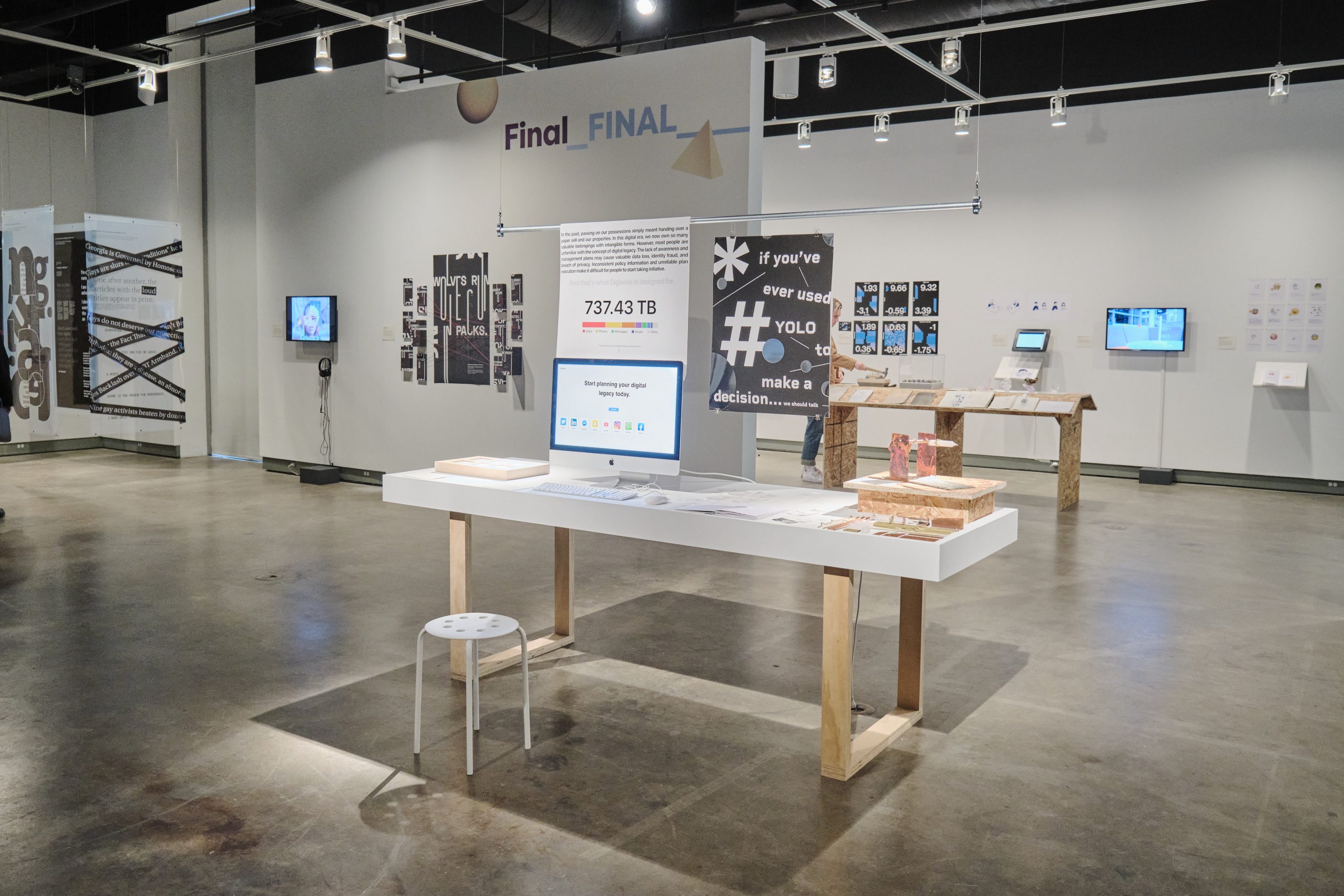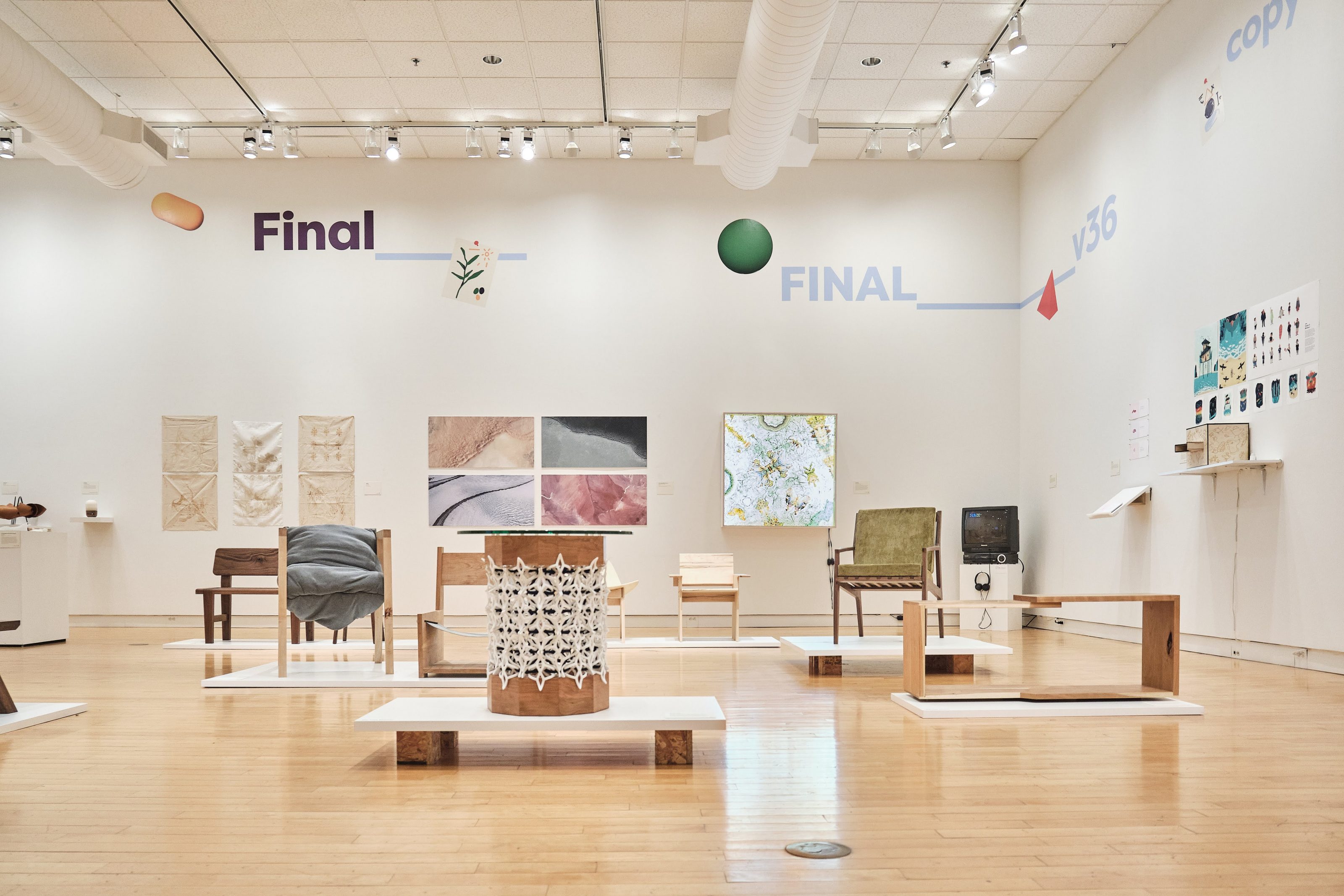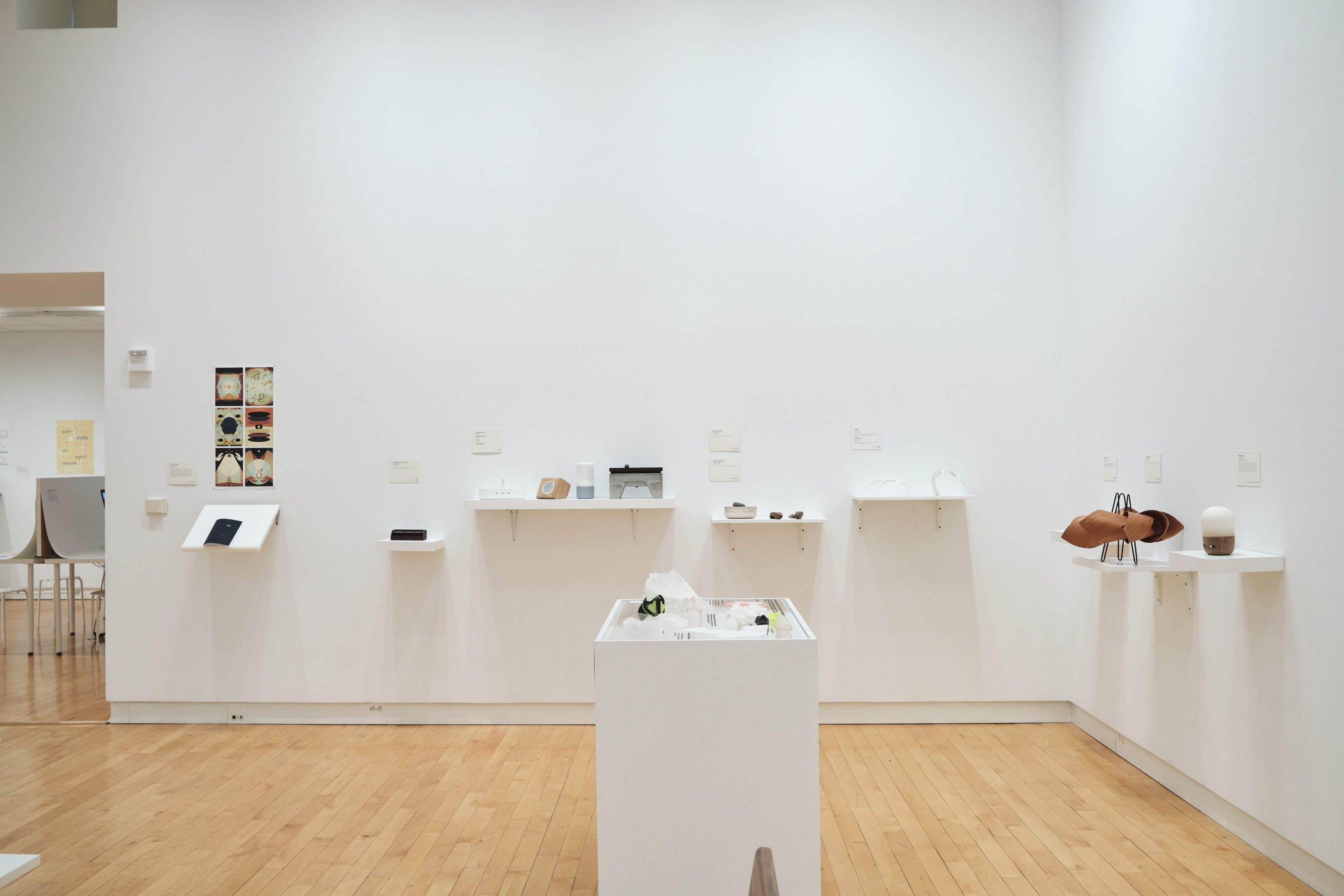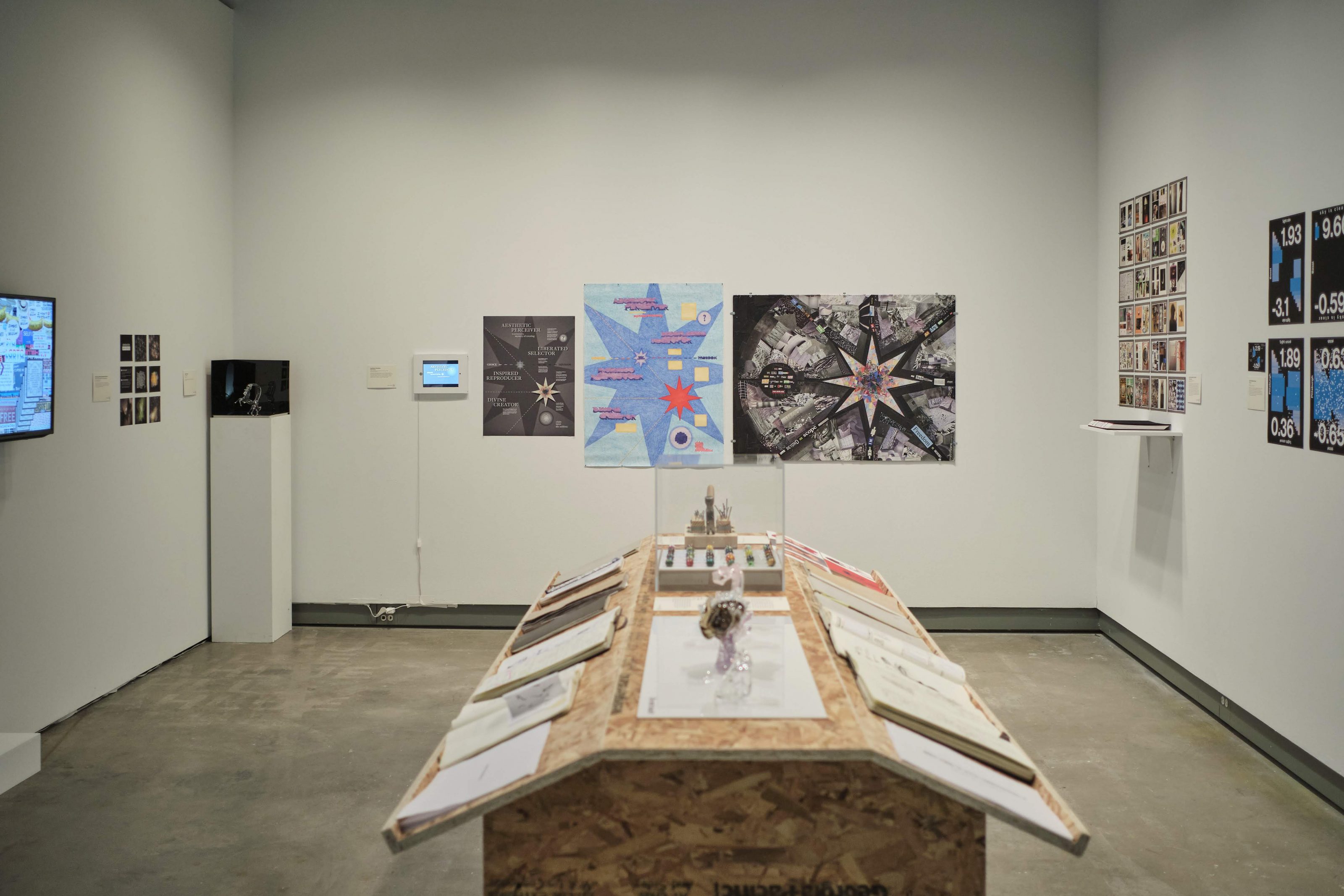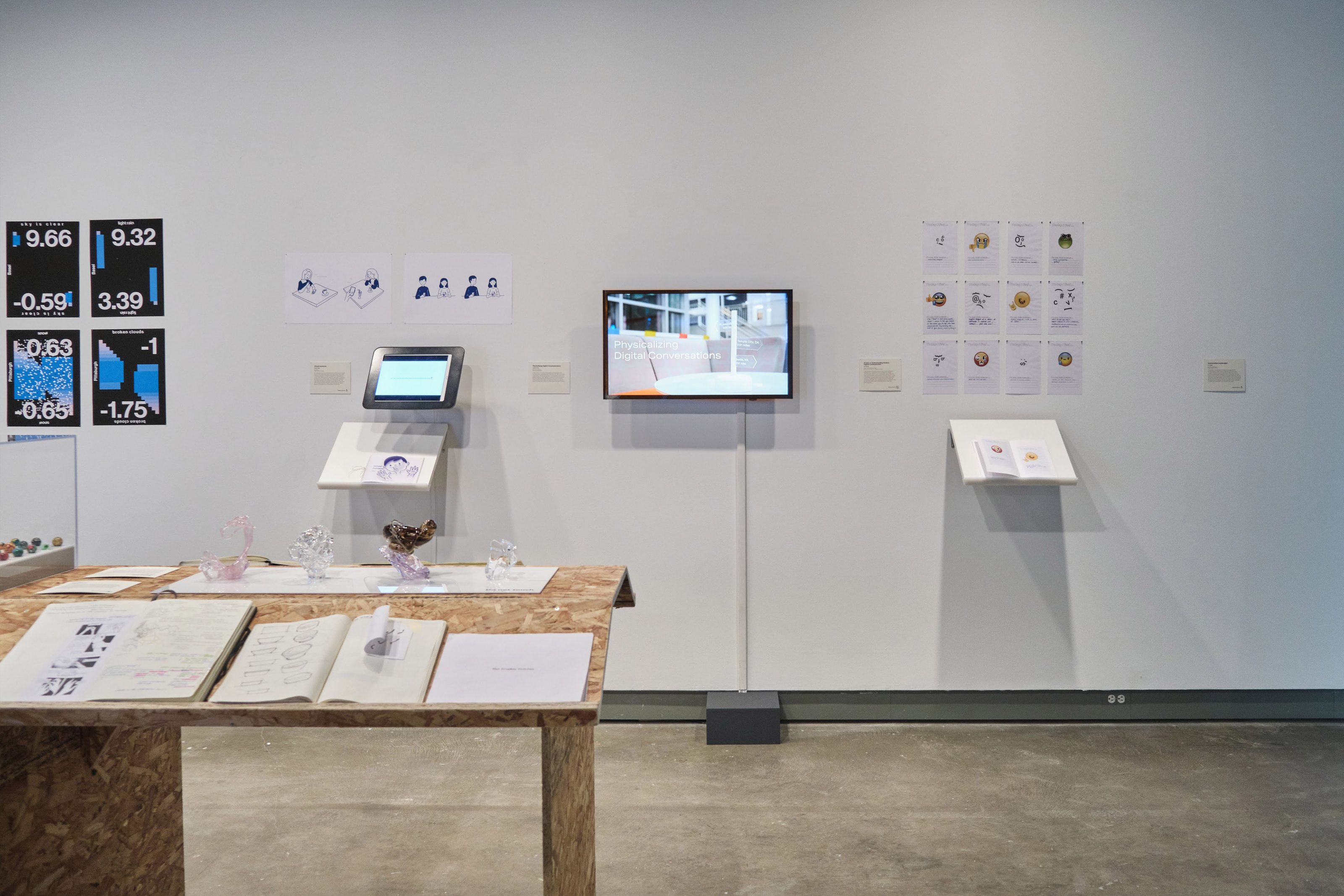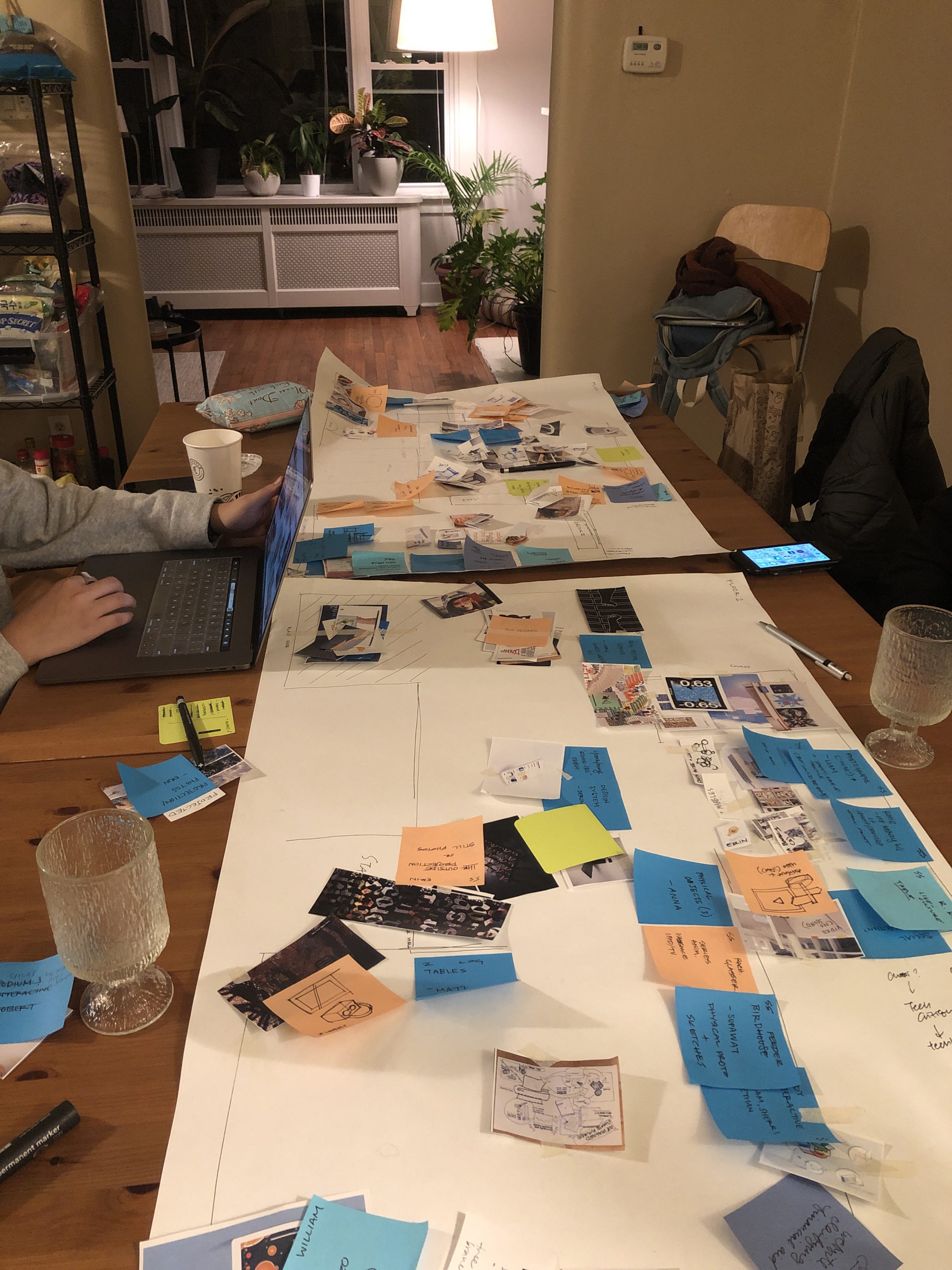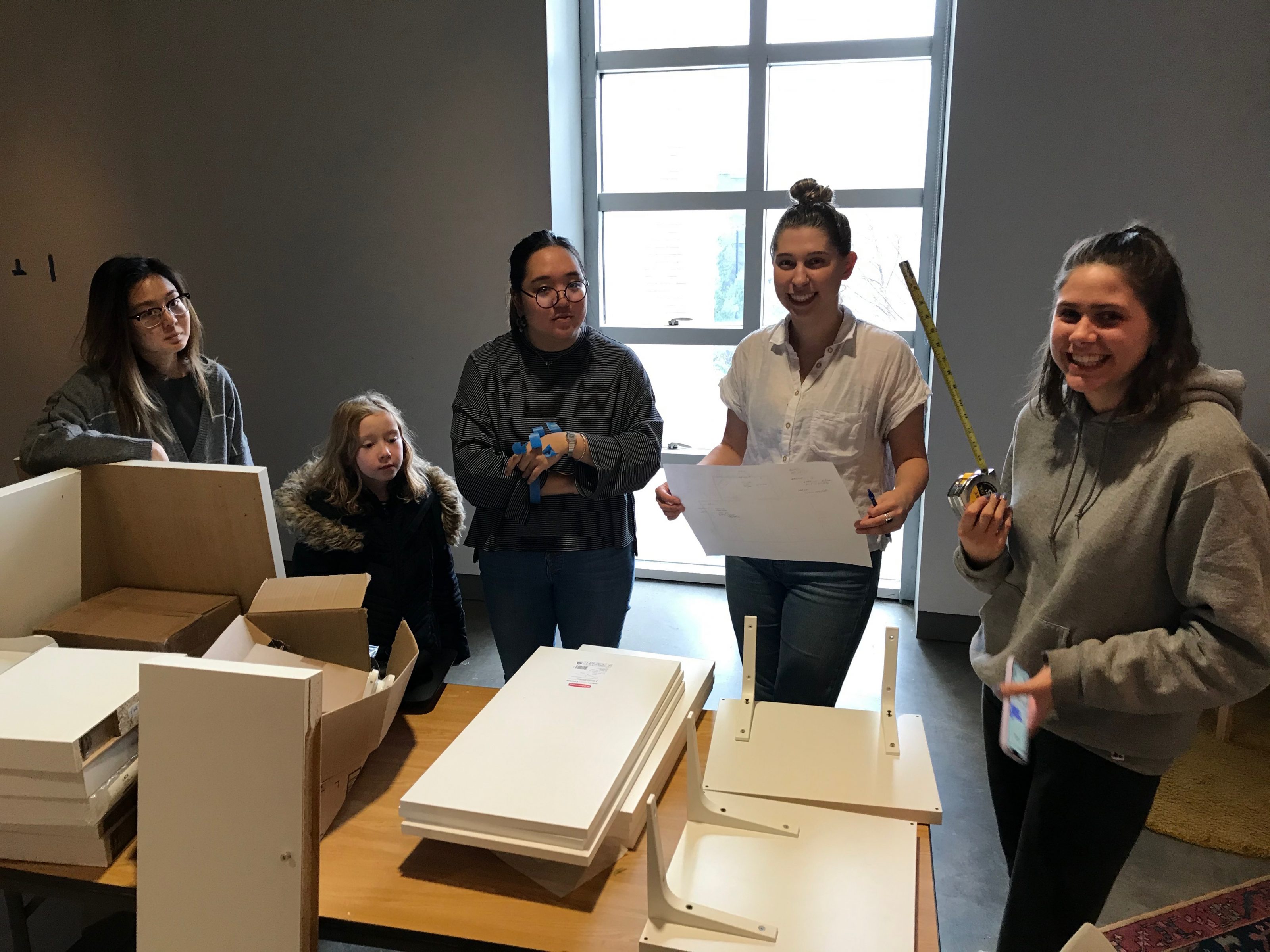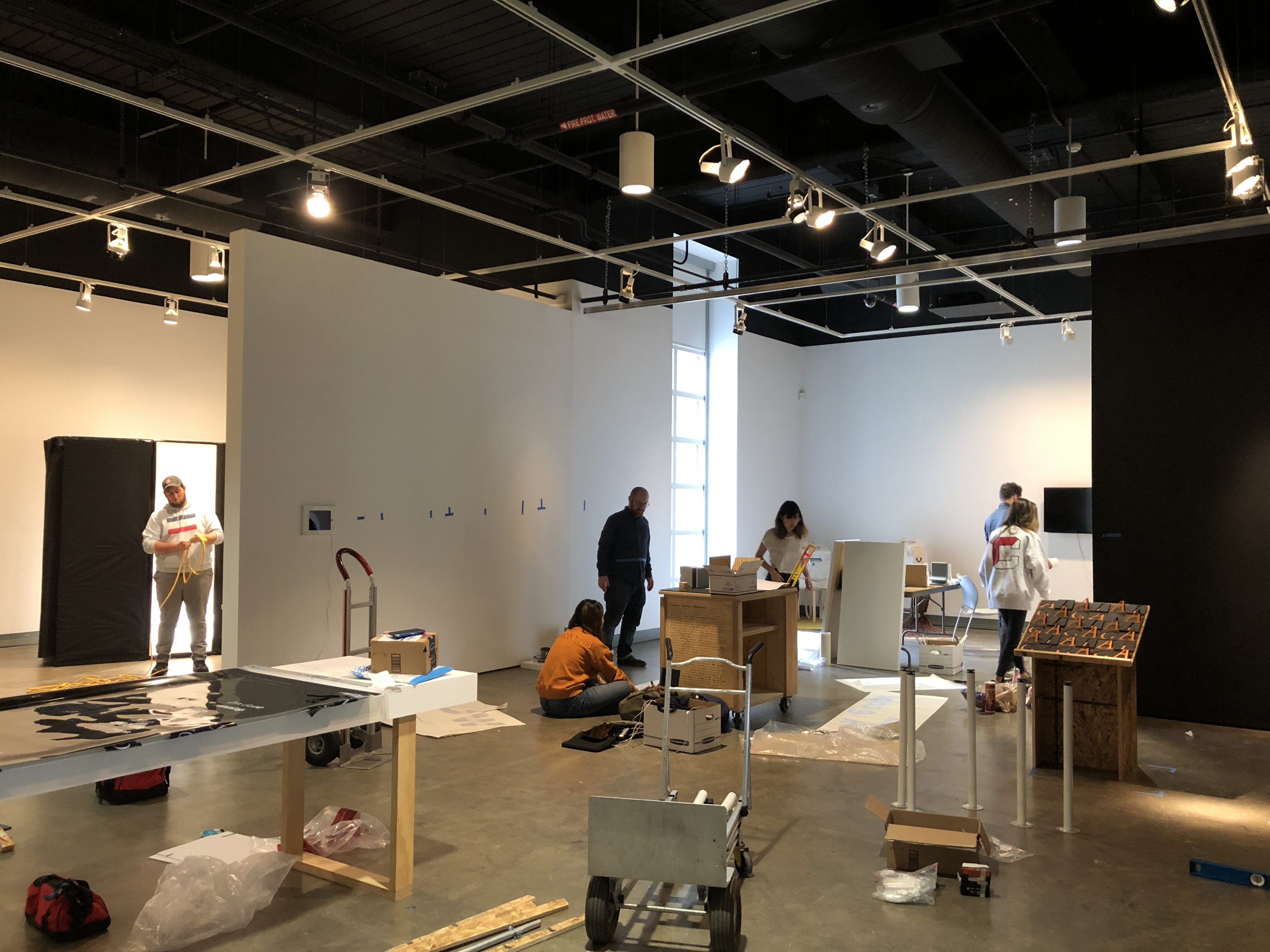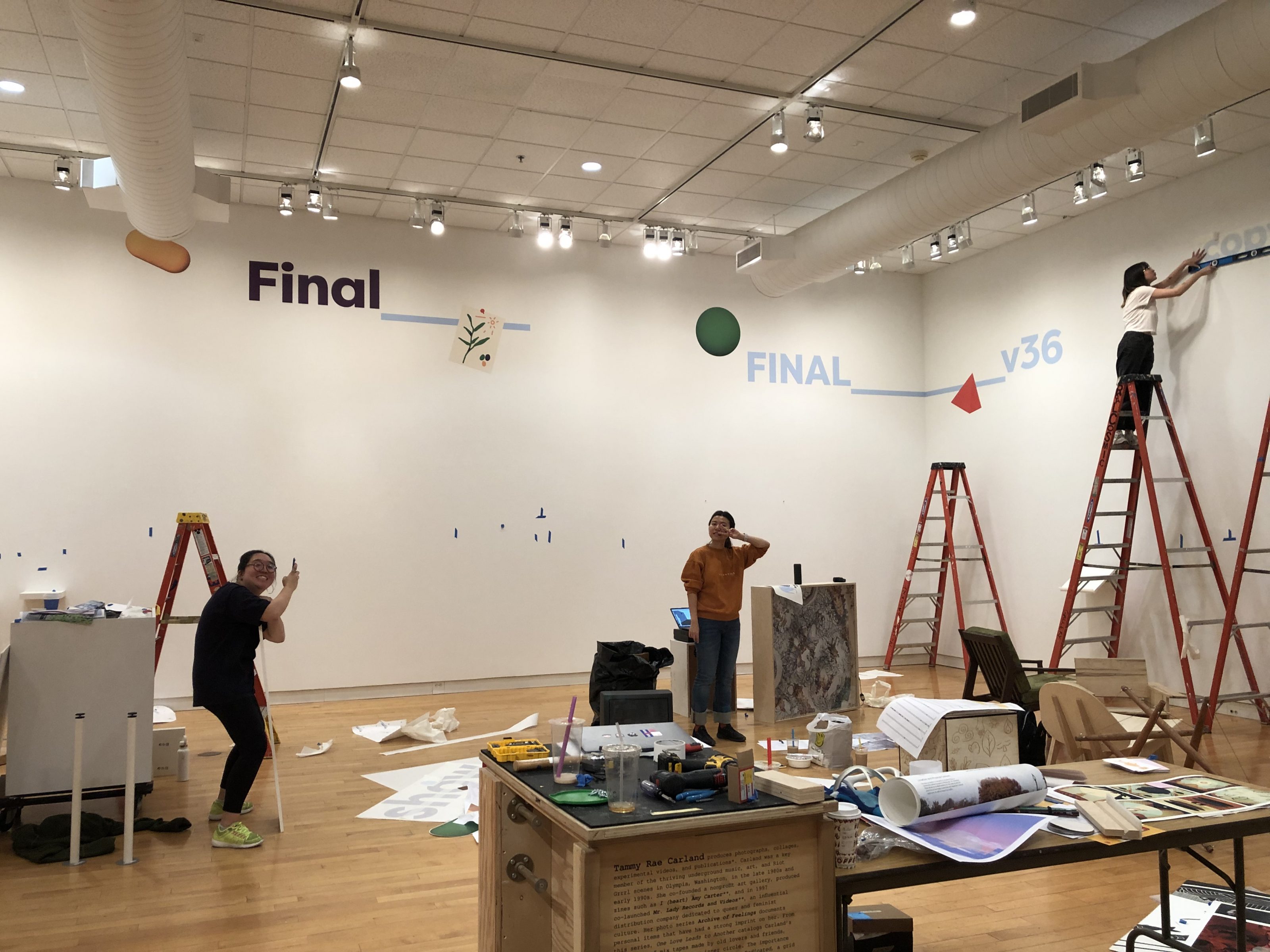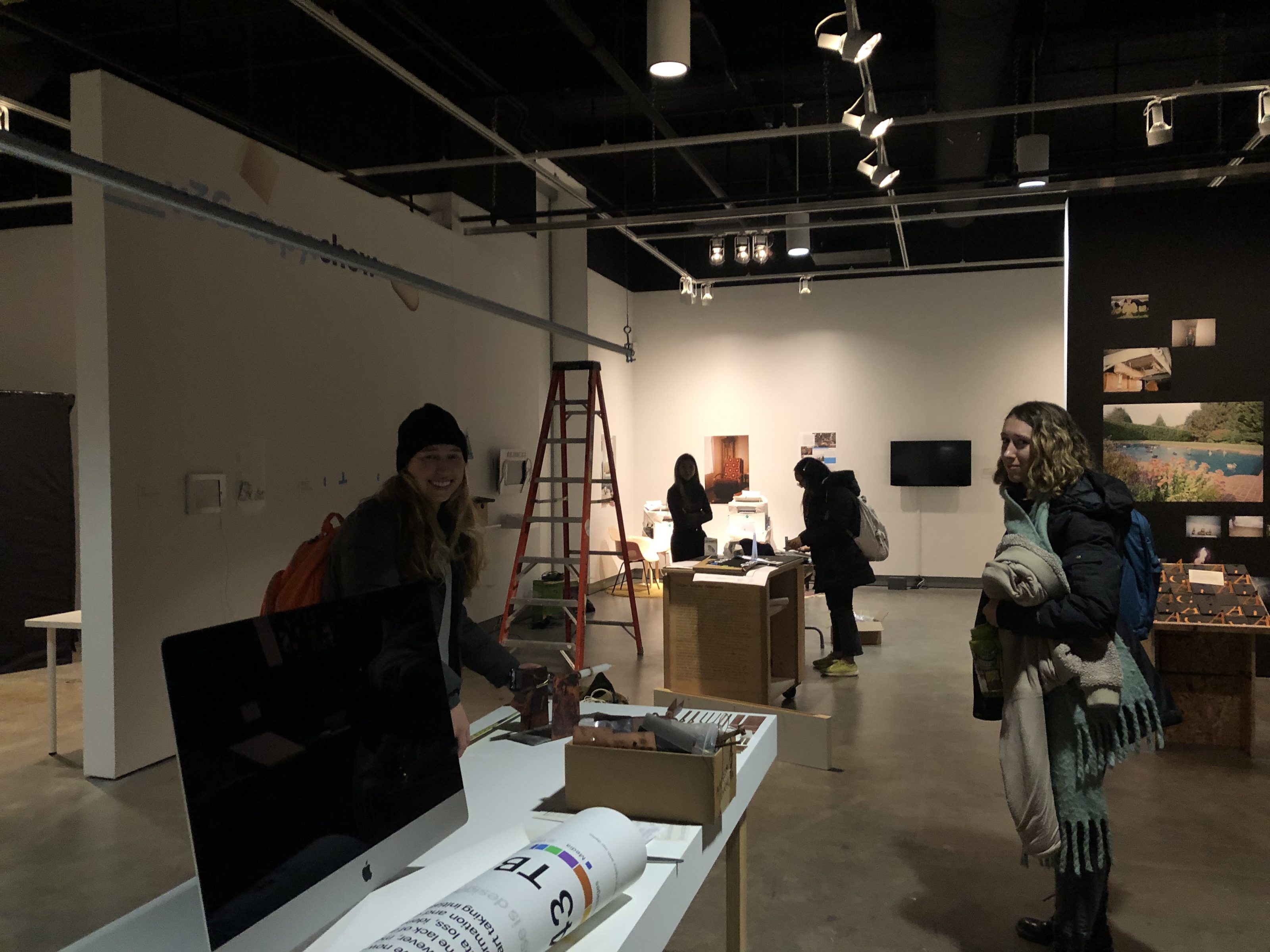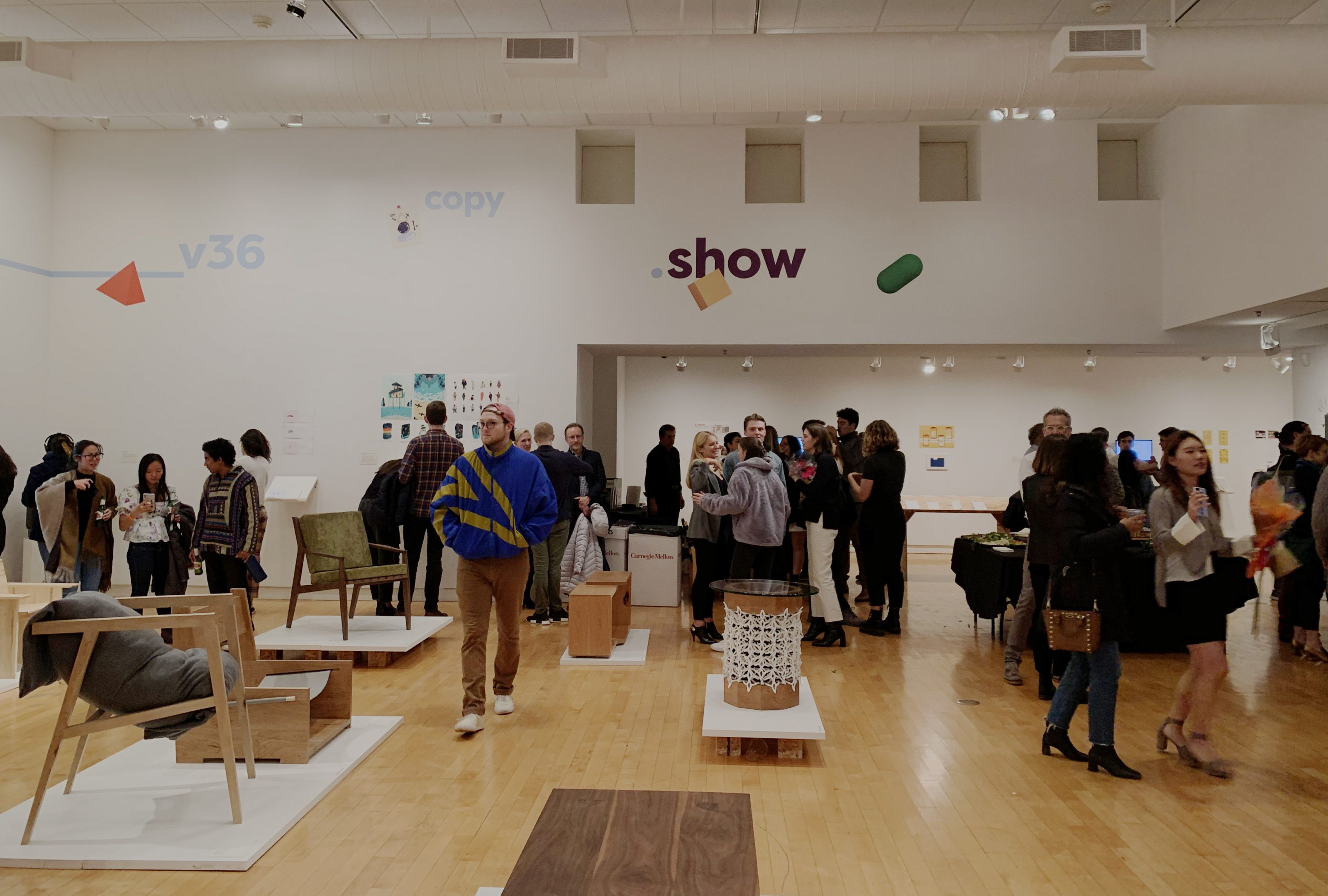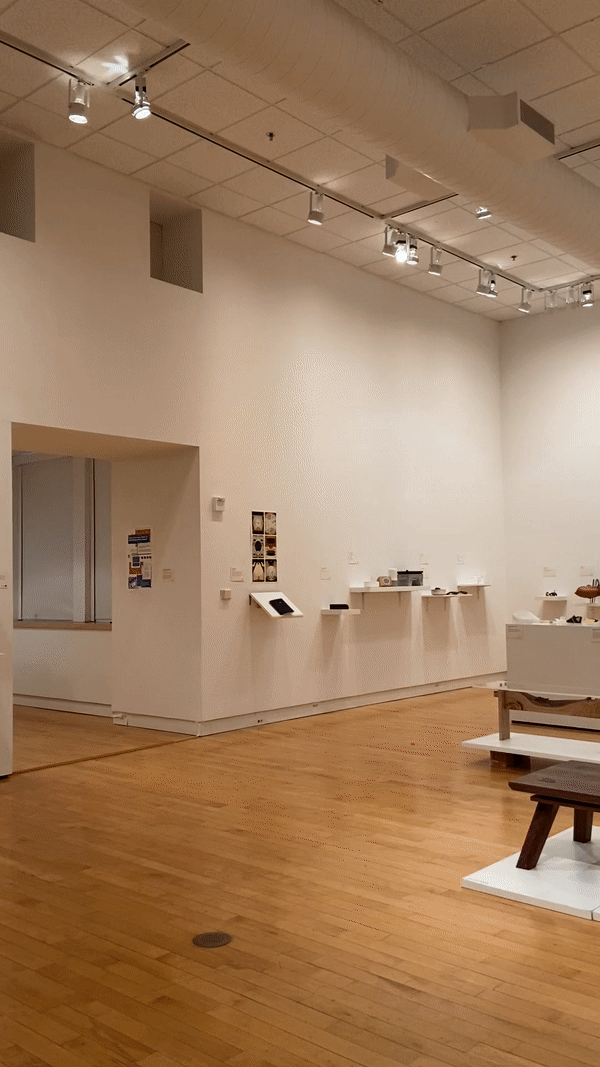In December of 2019, the School of Design senior class at Carnegie Mellon University put on an exhibit to showcase their work over the past four years in school. As a member of the class, I took a leading role in coordination and planning of the exhibition on the curation team. With over 200 pieces of various mediums submitted by classmate, the curation team was tasked with organizing and making meaning out of the work as a whole.
Finding Consistency in Variety
One of the first challenges we had to face was the sheer amount and variety of work that our classmates submitted. From mobile apps and services to illustrations and large-scale prints to furniture and hand held products, the exhibition needed a theme and order to link one piece to the next.
Rather than organizing pieces by medium or design focus (products, communications, and environments), we set out to create meaning based on the emotion that the piece created in its’ audience. At it’s root, design should evoke some emotion or response by its user/audience/viewer. So, the question we aimed to answer was: how might evoke these rich emotions in the exhibition visitors by the way we group and order work?
While this at first sounded like a simple task to do -simply grouping pieces by the “emotion” it evoked- we soon found that this was not as easy it seemed. While some pieces were “poster children” for evoking certain emotions, others were in a middle space, both contemplative and chaotic or both despondent and hopeful. It took countless hours, grouping and re-grouping, and meticulous shifting to come to a place where each piece not only worked within a group, but also next to its neighboring pieces.
Working in Flexibility
While we spent many painstaking hours of work preparing for “move in week,” we also had to build in flexibility each step of the way. This included plan B’s, C’s, and D’s. A huge takeaway from the process is that it is hard to get a realistic feel for space unless you are physically there; that meant visiting and re-visiting the gallery space to measure and envision pieces in certain spaces. We also had to prepare for the unexpected, like dealing with unfinished work or having a repository of extra pieces to fill in empty spaces. Perhaps one of the biggest hurdles we had to jump through were the many projects that were ongoing throughout the curation process; that meant constantly changing expectations for medium, size, and look and feel of pieces until the very end. We realized that building in wiggle room wherever possible was essential to pulling off the short move in week and the exhibition as a whole.
Building Contrast into the Journey
Another detail that became a significant element to the exhibition was finding the right balance of contrast and cohesion with the many, many pieces that were featured in the show. As pieces began to be put in place and move-in week was underway, we began to realize areas of the exhibition where contrast was lacking. Whether because the scale of a poster was off or the height of a pedestal was too tall or too short, we had to make changes to find the right amount of hierarchy. This was key to the success of the exhibition as it helped to create a flow and beat as one walked through the show.
We envisioned that a visitor would experience peaks of emotion and then, moments of pause and calm as they sensed the contrast built into the order the design pieces. As a visitor walked from a chaotic room to a quiet, still corner, or from a bright poster series to a set of small handheld products they also journeyed through a course of emotions.
Coordinating Across Teams
A final element to working on the curation team was coordination with classmates, gallery staff, and faculty throughout the process of bringing the senior show to life. Though challenging, this aspect of the experience taught me important lessons about refraining from the temptation to have my hands in every piece of the process, but rather to focus on the success of my piece as a part of the curation team. At the same time, I learned that having a leading role means you can’t be picky about what you do or don’t want to do. With the overarching goal of getting the show off the ground, you might have to pick up tasks that aren’t in your speciality (like drilling shelfs into the walls!) or that you “didn’t sign up for” (like running back and forth from the studio to the gallery a million times), but each of these tasks are just as necessary as the next when it comes to the final hours before opening a gallery exhibit!
—
Working alongside so many people and with so many moving pieces was a unique, challenging, and rewarding experience all at the same time. The senior design class of 2020 came together in awesome ways to put on an exhibit that I was thoroughly proud of!
photos curtesy of Jackie Chou


